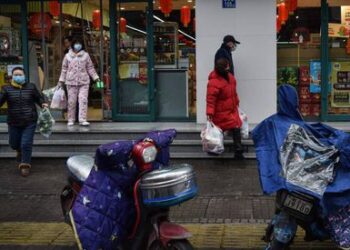

An environmentalists’ idea of both heaven and hell can be found in a lake 10 kilometers to the south of Valencia in eastern Spain. La Albufera nature reserve is a freshwater lagoon and estuary that is highly valued for its expanse of land and biodiversity, including 280 different species of birds. It not only acts as a green lung but also as a safety net in times of flooding.
But this ecological jewel is being assaulted by every element that can potentially destroy a natural space – pollution, lack of water, unsustainable hunting and the pressure of more than a million people who live on its doorstep with their cocktail of clashing interests.
Fish and birds have disappeared and plants have lost their resistance to the waves
Park manager Jiménez Romo
Moreover, new threats linked to climate change are looming, such as water scarcity, a rise in sea levels and saline infiltration. There is even the risk that the deteriorating quality of the lagoon’s water will turn it into a place from where greenhouses gases are emitted rather than absorbed.
Standing on the banks of this Mediterranean coastal wetland, park manager and biologist Javier Jiménez Romo sums up the plight of La Albufera with two pieces of data. The first concerns the place where water enters the lagoon, which has shrunk to half its size since the 1970s – in 2018, it was less than 200 cubic hectometers. This is due to the increase in population, agriculture and industry, which have absorbed all the water coming from the Turia River and a significant amount from the Júcar River. Only now is the Júcar Hydrographic Confederation taking cautious steps to correct the situation; this year the wetland will receive four cubic hectometers from the Júcar River and, from 2021, the quantity will double.
The second piece of data concerns the fact that the amount of water birds has fallen by 30% since 2009, according to a census undertaken by the NGO SEO Birdlife. Ten years ago, there were an estimated 130,000 birds; in 2019 there are only 90,000, according to Pablo Vera, an expert from the organization. In spite of this, an average of 11,319 ducks are being hunted every year in the natural reserve, according to official data – a figure that many observers, from ecologists to Valencia’s environmental prosecutors, consider unreliable given that it is based on the word of the hunters themselves.
An average of 11,319 ducks are being hunted every year in the natural reserve
Meanwhile, the president of the Valencian Hunting Federation, Raúl Esteban, does not give credence to the data from SEO Birdlife, and says the hunters are going to start taking their own census.
The quality of the water in La Albufera also presents a serious problem. “There is not even 10 centimeters of transparency,” says Jiménez Romo. “But although there are heavy metals at the bottom, the pollution here is not the same as you get in the [River] Thames or the Estuary of Bilbao from toxic industrial waste. La Albufera’s green color is due instead to it being full of phytoplankton, indicating that the quality is almost as bad.”
The process is called hyper-eutrophication and is caused by the massive amounts of nutrients that have been poured into the lake since the 1970s – in particular nitrogen and phosphorous from insufficiently purified residential water waste, industrial waste and the chemical fertilizers used in the rice fields that cover 14,500 hectares of the park’s 21,000 hectares. The excess of fertilizers generates an explosion of phytoplankton, which turns the water murky and stops sunlight from penetrating to the bottom, which in turn causes the death of aquatic plants and triggers an environmental imbalance. “Fish and birds have disappeared and plants have lost their resistance to the waves, and the banks as well as La Albufera’s small islands have begun to be worn away,” says Jiménez Romo.
The number of water birds has fallen by 30% since 2009
On the bright side, the new purification systems for water waste are starting to produce results. “The aim is to reach the threshold of 90 micrograms per liter of chlorophyll, which is an indicator of the trophic level in the water by 2021, and we are already under that. The aquatic plants are reappearing in certain zones and there have been several transparent areas,” says Teodoro Estrella, the head of planning at the Júcar Hydrographic Confederation.
While ecologist Andreu Escrivá believes that the management of the area has improved in recent years, he also believes it is urgent to decide “what we want La Albufera to be.” For example, the regional government of Valencia wants to adapt the CV-highway that crosses the park so that it meets environmental standards, but some locals are opposing the move as they favor a faster route.
There is also the potential damage from the vast planned expansion of the port of Valencia, which the authorities are attempting to complete without an updated environmental impact study – the existing one dates from 2007.
The port project will alter the sea currents and exacerbate the dangerous erosion of the natural park’s beaches, which form part of the slim strip of land separating the lagoon from the Mediterranean. This will increase the risk of salinity posed by the likely rise in the sea level due to climate change.
English version by Heather Galloway.
Get real time update about this post categories directly on your device, subscribe now.





















